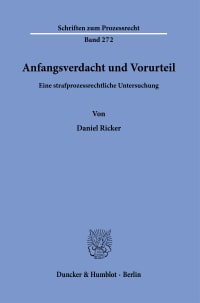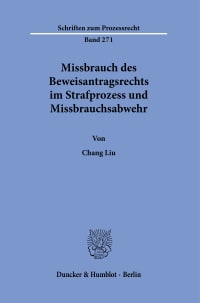Untersucht am Beispiel des Wohnsitzgerichtsstands des Geschädigten nach Art. 13 Abs. 2 i.V.m. Art. 11 Abs. 1 lit. b EuGVO
Description
»Principles in the Methodical Handling of the Dynamics of European Procedural Secondary Law«
Due to the progressive economic and political integration of the Member States, the le-gal order of the European Union is in a state of ongoing change. Especially with regard to European Secondary Law, this change leads to a constant evolution of the law. For the legal professional, the question therefore arises how to methodically deal with the change in the systematic environment of the existing European Union law. At the core of the discussion in this thesis is the fundamental question of whether the law that has been newly enacted or amended in the course of the progressive evolution of Second-ary Law must also be taken into account in the application and interpretation of existing Secondary Law that has remained unchanged. This methodological peculiarity to be observed in the application of Secondary Law, which can also be referred to as the evolutionary interpretation of the law, will be explained on the basis of an example, the domicile jurisdiction of the injured party according to Art. 13 para. 2 in conjunction with Art. 11 para. 1 lit. b of the Brussels Ia Regulation.
Overview
1. Einführung in das Thema
Eigenständigkeit des Unionsrechts – Problemaufriss – Gang der Untersuchung – Aufbau der Arbeit
2. Die Dynamik des Europäischen Sekundärrechts
Dynamik als Grundprinzip der Europäischen Rechtsordnung – Dynamische Entwicklung des Europäischen Zivilprozessrechts – Exkurs: Der »Spillover-Effekt« – Innere Ordnung des Europäischen Sekundärrechts – Zusammenfassung
3. Die Methodik des Europäischen Sekundärrechts
Einführung in die Methodik des Unionsrechts – Die Rechtsprechung des EuGH als Rechtsquelle des Unionsrechts – Die Auslegung des europäischen Sekundärrechts
4. Der eigene Wohnsitzgerichtsstand des Geschädigten
Zeitliche Entwicklung – Verkehrsopferschutz und Zuständigkeiten der angerufenen Gerichte – Der Meinungsstreit in Literatur und Rechtsprechung
5. Grundsätze der dynamischen Auslegung des Sekundärrechts
Ein Recht im Werden – Abgrenzung von der dynamischen Auslegung des Primärrechts – Methodischer Umgang mit der Dynamik
Schlussbetrachtung
Abbildungs-, Literatur- und Sachwortverzeichnis






